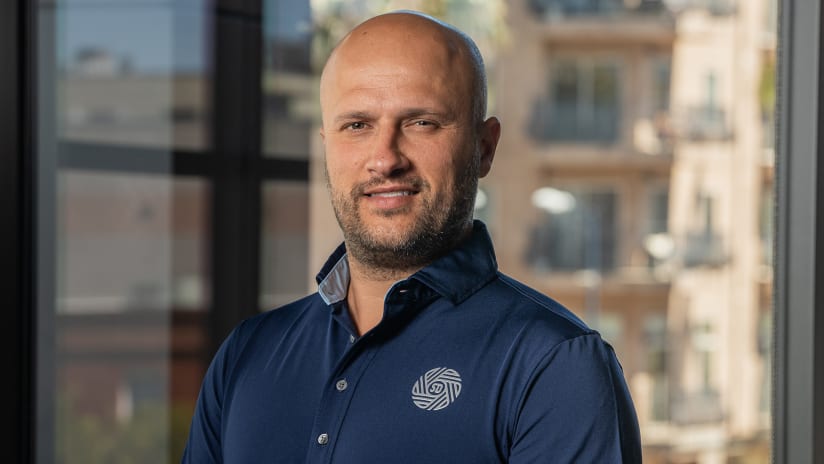SAN FRANCISCO – The US national team’s seldom-used 4-4-2 diamond formation was one of the biggest topics of the night before, during and after the Americans’ wobbly 2-0 win over Azerbaijan at Candlestick Park.
But just how much there was to be gleaned from Jurgen Klinsmann’s latest experiment with the team’s formation is unclear for now. Tuesday night’s match was just the second time the team has used the diamond formation in nearly three years under Klinsmann – they broke it out for the first time in a 2-2 draw against Mexico last month – and at least for now, it showed promise against an overmatched and conservative Azerbaijan side.
“I just love the formation for this team,” said midfielder Kyle Beckerman, who played the holding midfielder role in the formation for the US in April but gave way to Jermaine Jones on Tuesday. “I think we keep at it and we keep getting better. I think we can really get after teams and break them down through passing and really be the team that dictates play and be on the offensive rather than counterattack. It’s just a really good formation, you see a lot of teams switching to it now.”
March to the Match breaks down the US win
Click here to download the episode on MP3
Known to most Major League Soccer fans as the formation used successfully for years by Real Salt Lake, the diamond formation was also a winner for Chelsea’s 2009-10 title run in the English Premier League and, at times, AC Milan’s steady-handed teams of the mid-aughts.
It’s also a staple for club teams in Argentina that has carried over to the national team in the past, calling for level-headed playmakers in the midfield and speedy, athletic outside backs to provide width up the field.
Klinsmann didn’t indicate either way whether or not the US will use the formation when they suit up again on June 1 against Turkey at Red Bull Arena (Sunday, 2 pm ET, ESPN2), but it’s clear they have the personnel to potentially make it work. Wingers Graham Zusi and especially Alejandro Bedoya were active and pesky on Tuesday, and the formation would allow Michael Bradley to push further up the field into a role that suits his knack for smart distribution and dogged pressure.
And while Jones has taken flack in years past for his wayward positioning too far up the field to play the diamond’s essential destroyer role, he stayed home on Tuesday. It’s a role he’s played in the past with Schalke and could easily do so again if Klinsmann asks when the World Cup opens next month.
“He’s played years throughout different roles,” Klinsmann said of Jones. “If we play a diamond like we did, then it’s really important that he stays there and protects our two center backs. And with his passing technique he can open up and switch a game right away.
“He understood that role,” Klinsmann added. “The way he recovers balls and is physical with the opponent, that’s just one of his strengths that we hopefully see in Brazil.”
Added Jones: “I feel OK with that situation. It’s no problem if I play alone [at holding midfielder].”
As for the outside backs called on for pressure up the field, Fabian Johnson earned the start at right back and longtime US midfielder DaMarcus Beasley was once again on the left.
Each of those players and their challengers Timmy Chandler and DeAndre Yedlin – who both served as second-half subs against Azerbaijan – can certainly manage the speed requirements of the role and like to get forward to compliment a talented midfield core learning a new system on the fly.
“Every day, the relationships continue to get better,” Bradley said. “The understanding between guys – how to move with each other, how to play with each other. That part is all improving.”











